Four chefs dart around the glass-enclosed kitchen at Core by Clare Smyth, a three-Michelin-starred restaurant in London. They stir sauces. Add oil to sauté pans. Check oven temperatures. Check again.
They’ve never cooked in this kitchen before. Now they have to cook as if their lives depend on it. What they put on the plate will determine whether they’re told to pack their knives and go, or whether they survive to cook another day on Top Chef, the Emmy– and James Beard Award–winning television series at the apex of the food chain of culinary competitions.

“What makes our show special is we really focus on the food,” says host Padma Lakshmi, while getting her makeup touched up before heading into Core to try the chefs’ creations. “Reality television has changed significantly from when we started, but our ethos has always been the same: It’s about the craft of making great food at a very high level.”
Top Chef kicks off its 20th season March 9 on Bravo, and it’s marking the milestone with a World All-Stars edition. Sixteen former contestants have been plucked from the show’s thick portfolio—29 international versions!—to duke it out for the title.

For the first time, the entire season was filmed abroad. The bulk of the battles take place in London, including the Restaurant Wars throwdown being shot on this sunny September day at Smyth’s place in Notting Hill. In typical Restaurant Wars fashion, two teams have to create a multi-course menu—a meal that measures up to Core’s three-star status. (We’re not naming the chefs who’ve made it this far because TV shows, like food, shouldn’t be spoiled.)
During Top Chef’s lengthy tenure, the series has played a significant role in what has appeared on dining tables and screens across the country. More than 100 chef-testants have competed. Many have gone on to open restaurants, write cookbooks, and hawk their own lines of sauces, oils, spice blends, and more. Just as many have made appearances on—or starred in—other cooking shows, the ranks of which have exploded thanks in no small part to the success of Top Chef. Would there be Chopped or The Great British Baking Show without Top Chef? We’ll never know. But we do know there wouldn’t have been a Top Chef Masters, Top Chef Amateurs, Top Chef: Just Desserts, Top Chef Family Style, or any of the other myriad spin-offs spawned by the OG. The series has earned its bona fides as a true tastemaker, shaping the way we think about food and the people who create it.
“It’s the show the industry takes most seriously,” says Tom Colicchio, who returns to the judges’ table this season, along with Lakshmi and Gail Simmons. Cofounder of New York City’s famed Gramercy Tavern, Colicchio had already opened several of his own acclaimed eateries and amassed a ton of cred in the restaurant world when Top Chef came calling with a job.
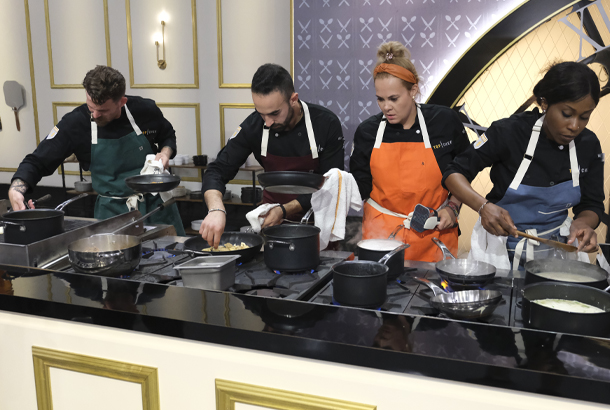
“I said no three times before saying yes,” Colicchio recalls. He’s sitting in a wooden pew at St. Peter’s, a 19th-century Anglican church just steps away from Core that’s doubling as a staging area for the cast and crew while they film the Restaurant Wars episode. “My big concern was I didn’t want the industry to think it was some kind of joke, but of all the cooking shows out there, the industry looks at Top Chef as the show with genuine talent and genuine cooking.”
The ever-changing roster of filming locations, along with an increasingly diverse cast of contestants and guest judges, has exposed viewers to a pantry full of new ingredients and cooking styles. Viewers—more than 7 million of them last season—have seen Vietnamese shrimpers at work in Louisiana and learned about the bold flavors of berbere from Ethiopia-born, Sweden-raised culinary rock star Marcus Samuelsson. They’ve watched contestants cook over an open flame with Mayan ingredients and tagged along on a tour of Portland, Oregon, restaurants that serve Pan-African cuisine, hearing about dishes like beef suya and cassava couscous possibly for the first time. Whether the subject is molecular gastronomy or mole, the show has mastered the art of blending education with entertainment.
“The world is so food-obsessed—not only with eating the food but the preparation of it—and I think we’ve had a large part in contributing to that,” Lakshmi observes. She’s particularly struck by the influence Top Chef has had on the generation that has grown up watching it. “When I’m standing on the corner in New York trying to hail a cab, I have young people come up to me and say, ‘Yesterday at a sleepover we did a Quickfire Challenge,’” she says, referring to the fast-paced bouts in which competitors whip up creative queso dips or decadent sugar-free desserts. She’s heard of college students making amuse-bouches and bringing them to Top Chef watch parties. “I didn’t know what an amuse-bouche was until I started working on the show!”
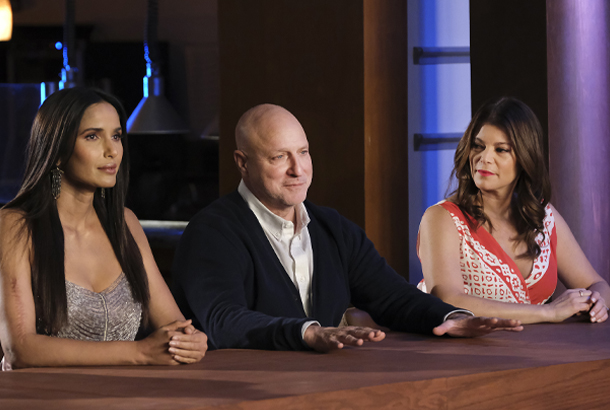
At a basic level, Top Chef helped make cooking, well, cool. Contestants are portrayed as culinary gladiators clad in white coats of armor, taking their trusty knives into high-stakes challenges, racing against the clock—and each other—to create the best Bocuse d’Or–inspired ballotine or elevate a can of Spam. The show didn’t invent the celebrity chef, but it sure created a lot of them.
“It sounds like I have not an ounce of humility, but I say it because I’m as staggered by it as anyone: Over 20 seasons, I think there’s no competition show in America that has produced more household names,” says Simmons, on break at St. Peter’s between Restaurant Wars meals.
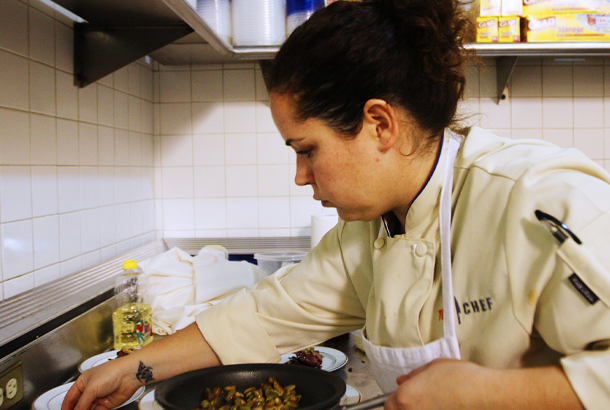
Stephanie Izard had just sold her three-year-old Chicago restaurant, Scylla, when casting agents asked her to interview for Top Chef in 2007. A year later, she clinched the Season 4 win, making her the first female chef to wear the crown.
“It’s been a wild ride—almost 15 years later, and it still continues,” Izard says, calling from her home in Los Angeles. Her present-day empire spans multiple concepts in Chicago and LA, where she launched West Coast outposts of her popular Girl & the Goat in 2021 and the Peruvian-inspired Cabra last year. Her signature line of This Little Goat products is growing, too, with the recent rollout of the crispy condiment This Little Goat Chili Crunch.
“I can still remember that moment when Top Chef called me,” recalls Izard, who almost passed on the interview invite because she had to work that day. “I’m glad I said yes. I’m in my backyard right now doing a photo shoot for my CPG [consumer packaged goods] brand—things that probably wouldn’t have happened if I weren’t on the show.”
Izard’s Top Chef victory came with a $100,000 prize. Today’s winners get $250,000. The bragging rights, though? Priceless.
“If you win, you have access to capital to get a restaurant open,” Colicchio says. “That’s usually the hard part—getting access to capital—especially for women and minorities. That’s why you see fewer minorities and women running kitchens. That’s changing.”
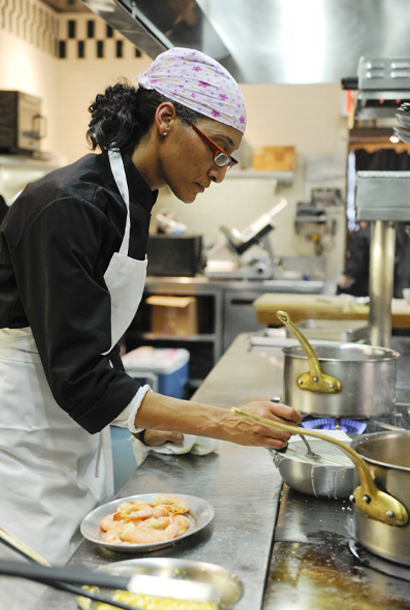
Even for the also-rans, simply being a Top Chef contestant can catapult a career to next-level status. Carla Hall didn’t win either of the two seasons in which she competed, but that didn’t stop the hootie-hooing Nashville native from becoming an Emmy-winning television personality in her own right, as she cohosted ABC’s The Chew during its seven-season run.
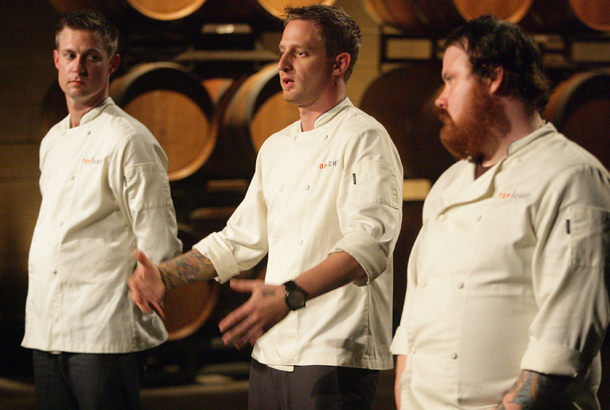
After Michael Voltaggio snagged a memorable Season 6 victory from his older sibling, Bryan, the brothers combined to open restaurants from coast to coast, including their eponymous steak house at the MGM National Harbor casino outside Washington, D.C. They’ve also enjoyed plenty of post–Top Chef time on the small screen, hopping from one cameo to the next and headlining their own Battle of the Brothers cooking competition on Food Network.
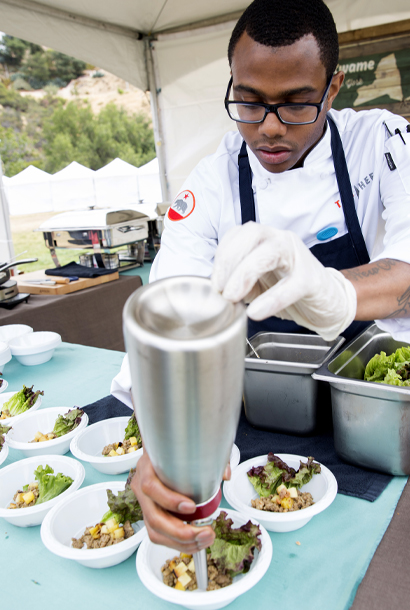
Kwame Onwuachi was just 25 years old when he entered the Top Chef kitchen during Season 13. He got bounced for his take on chicken and waffles, but it’s safe to say he has made a strong recovery: The James Beard Foundation dubbed him Rising Star Chef of the Year in 2019, and his memoir, Notes From a Young Black Chef, is being adapted into a movie.
“Top Chef definitely gave me a huge platform very early in my career,” Onwuachi says via Zoom. In the background, workers scurry about, putting the finishing touches on his new Afro-Caribbean-influenced restaurant, Tatiana, at New York City’s Lincoln Center for the Performing Arts. “It creates so many opportunities for people. I’d do it all over again in a heartbeat.”
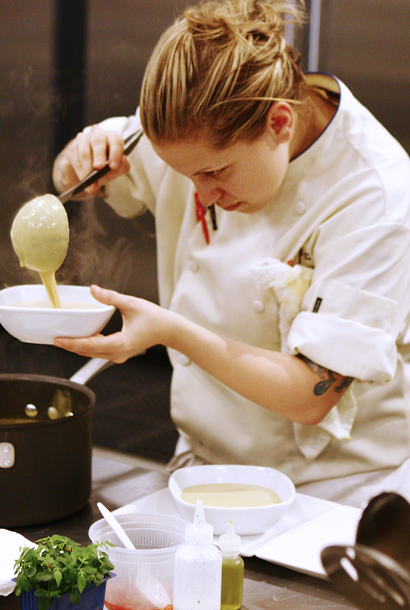
Former contestant Jamie Lauren did do it all over again, competing on Season 5 and returning two years later on an All-Stars edition. The experience proved to be somewhat bittersweet; she sums up her rookie season in New York as “amazing,” but her penchant for cooking a certain bivalve mollusk saddled her with a nickname she can’t escape to this day. “I still get called Top Scallop,” she says. “It’s been, like, 15 years. Can we stop? I guess I should be flattered people remember me.”
Her second helping of Top Chef left a far worse aftertaste. Some fellow All-Star contestants, for example, gave her the side-eye for leaving the kitchen to go to the hospital after cutting her thumb. “I was automatically labeled as trying to dodge things,” Lauren says. Around the same time, she’d been hired to helm the kitchen at a restaurant in Southern California, which turned out to be a poor fit for several reasons—including because her boss didn’t like the way she came across on the show. She had to pack her knives and go. “I saw what the show can do for you if you do well and people like you,” she explains, “and what the show can do for you if you don’t do well and people don’t like you.”
Lauren remains involved with Top Chef, but now she’s behind the camera. She runs the culinary department, stocking the set’s cavernous warehouse with the ingredients and special equipment needed for each challenge. “I like working on the show more than competing on the show,” she says, making her way to a corner of the church to fetch more supplies.
When Top Chef first aired in early 2006, it was the vanguard of a new kind of cooking program, a move away from the teacher-behind-a-kitchen-counter format popularized by the likes of Julia Child and Emeril Lagasse. On this show, competition was a key ingredient, yet it differed from other early adopters, like Iron Chef America, where a single contestant squared off against a superstar, or Hell’s Kitchen, whose engine is fueled by its larger-than-life ringmaster, Gordon Ramsay. On Top Chef, Lakshmi says, “the chefs who compete are the stars of the show.”
Watching these stars in action, especially on an episode like Restaurant Wars, gives the audience a deeper understanding of the profession, from what goes into conceptualizing a dish to what it takes to execute it. The show pulls back the curtain on what it’s like to work in the pressure cooker environment of a high-end kitchen. That insight, Colicchio says, has changed restaurantgoers’ perceptions and expectations.
“I think a lot of diners are a little more empathetic, pandemic aside,” he notes, “because they see what chefs go through.” That doesn’t mean diners are easier to please—nor that they should be. The feedback Top Chef judges give to competitors has helped train viewers’ taste buds to be more discerning, to better know when a sauce has been over-reduced or a short rib hasn’t been braised long enough. The series has deputized legions of diners, turning them into de facto judges—a scenario Simmons has seen play out in person multiple times.
“Tom and I will be in a restaurant, and we hear the table of 20-something kids telling each other how the dish lacked acid,” she says with a laugh. “We’re like, ‘Oh no. We created monsters.’”
This kind of Top Chef effect on consumers isn’t confined to restaurants. It extends into the home, too.
“The show has pushed viewers to get in the kitchen more, to teach their kids to cook and try ingredients they never tried, whether it’s going to the grocery store and buying a jicama or trying to make pasta from scratch for the first time,” Simmons says. “Just learning the language of the kitchen and feeling they can navigate it with confidence after seeing what our chefs can do has absolutely upped the game. It’s made a really educated audience, 20 seasons later.”




